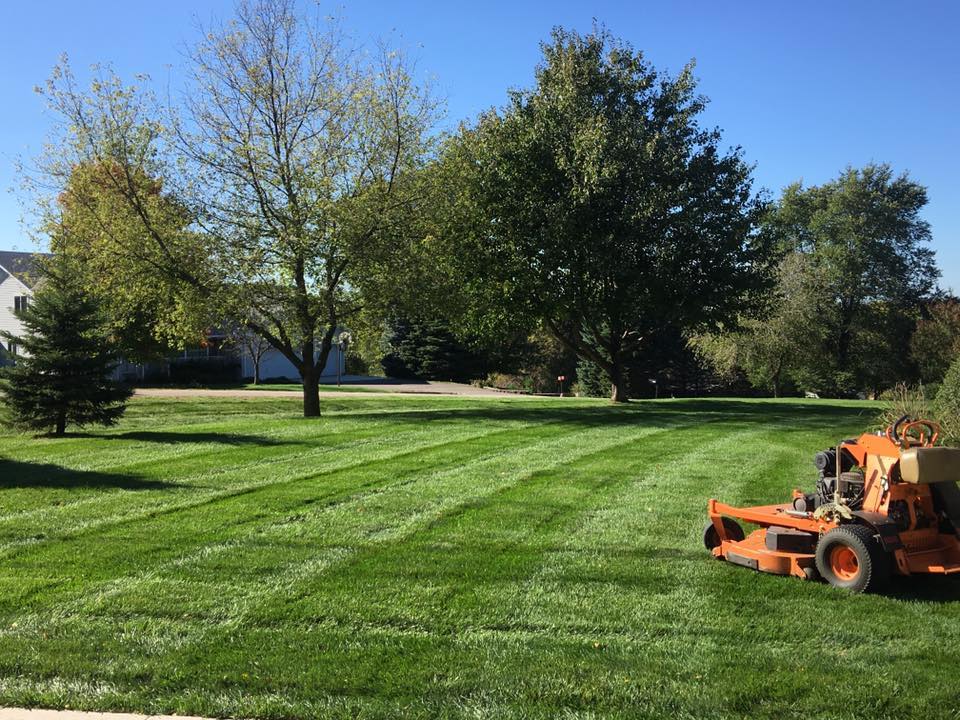Mike Minnich moved to a new community following his wife’s promotion, giving up a job in the railroad industry where he had spent 20 years. If his wife hadn’t found a business opportunity on Craigslist (while looking for a chainsaw), Mike might have taken another corporate job. Instead, he found himself the new owner of lawn care company. In 2017 Mike purchased the equipment and a customer list from a young man who had started a year previously and operated part-time.
“Other businesses are making it, why can’t I?” Mike asked himself. All he needed to do was maintain the equipment, market the business, and sell himself—but those skills were new to him. “There were no entrepreneurs in my family, so it was a bit scary,” Mike said, “but I know local business owners who succeed.”
“Lots of competitors, lots of work”
Mike was worried enough about the saturated market to do market research. “Everywhere you look, there’s a lawn care company’s truck driving by,” he observed. “I quickly learned there are a lot of companies, but there is also a lot of work.”
Mike plans to run a one-man operation like the former owner. He knows the business will be seasonal, and he’s okay with that. Part-time work around the holidays, and budgeting have allowed him to thrive without expanding his service line to counter lawn care’s seasonality.
Accomplishments with the SBDC at UW-River Falls:
- Entrepreneurial Training Program completion
- Business plan including financial projections
- Sales and marketing strategy
Entrepreneurial Training Program key to Mike’s success
Just as Mike was starting Cutting Edge Lawn and Landscape Care, he saw an ad in the paper for the Entrepreneurial Training Program (ETP) offered by the SBDC at UW-River Falls. He enrolled in the class taught by SBDC consultant Katherine Fossler.
In the 10-week class, students produce two iterations of their Business Model Canvas, a fully executable business plan, and three years of detailed financial projections. Katherine observed that three tools used during the class were instrumental in Mike’s ultimate success—the Business Model Canvas, the Empathy Map, and the student cohort model itself. The Business Model Canvas took the guesswork out of Mike’s understanding of his customer segments and revenue streams. The Empathy Map helped him do “a deep dive into his target market, who influences them, and pinpoint how to market his services,” Katherine said.
The advantage of the cohort model is that students study the same material and participate in discussions where they apply what they’ve learned to each other’s businesses. Mike appreciated the diversity of the group. “They asked questions about my business, suggested services I hadn’t thought of. It was awesome to learn how small businesses are taking off,” he said. “People are tired of working for the corporate world. We’re going back to the old model of the store on the corner.”
The SBDC’s resources are a tremendous benefit to small businesses, including both the ETP class and the free one-on-one counseling offered. Mike met with Katherine occasionally before or after class. “It was inspirational to see Mike’s confidence grow from the ETP class,” Katherine said. “It was a significant transformation.”
In the busy spring landscaping season, Mike’s biggest challenge is the physical work his business requires. “When I’ve taken on a lot, my body lets me know,” he said. Throughout the summer, work is steady. To increase his efficiency, he uses software developed for the landscaping industry for estimates, scheduling, and invoicing. Mike is making a success of his one-man operation by sticking to his business plan, and managing his time effectively.
